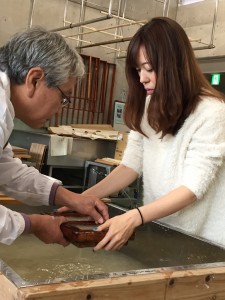=Report= Reporting Sekishu-Banshi Japanese Paper Making
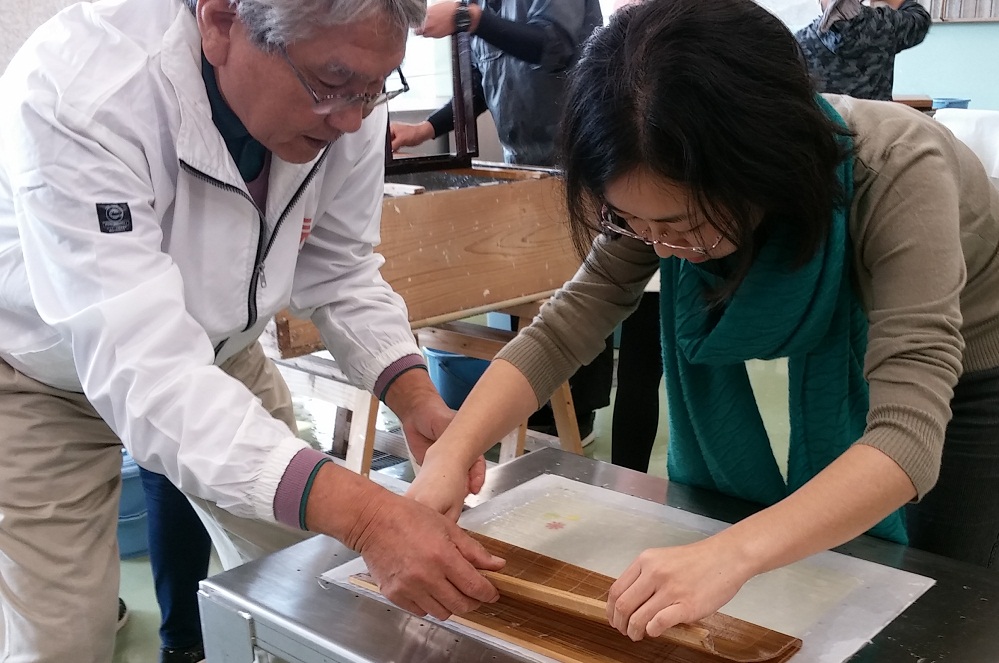
This web page introduces the remarks and comments written by CIR (Cordinator of International Relations) of Shimane Prefectural Government who tried Sekishu-Banshi Japanese Paper making.
Ms. Natalia Borkhodoeva ( from Russia)
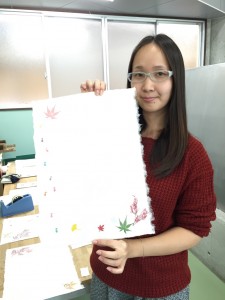 Though the work was difficult, I finally made my own paper on the third try thanks to the kind instructions of the staff there. I felt happy to have been able to make something my own hands in a world, where almost everything around us is produced by machines.
Though the work was difficult, I finally made my own paper on the third try thanks to the kind instructions of the staff there. I felt happy to have been able to make something my own hands in a world, where almost everything around us is produced by machines.
Sekishu Washi Center has both an exhibition room and a shop. There are lots of lovely paper-made products, such as business or name cards, bookmarks, and even costumes for kagura, a traditional ritual performance. The long fibers of sekishu washi make the paper stronger and harder to rip compared to regular western paper, and the paper-made products can survive for more than 400 years.
Ms. Du Chunhong ( from China)
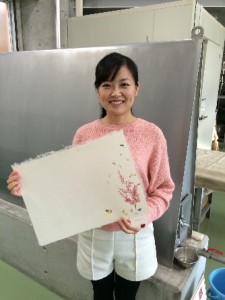
Though the paper making process appears to be easy to follow, but once you try to do it yourself, you realize its difficulty. When I attempted to scoop up the paper solution in the paper-making vat, I could not make the solution flat because of the water pressure. On my third try, I finally succeeded with help from the instructor. Once my paper was done, I wondered how I should use this beautiful paper. Then, I thought that writing waka or haiku poetry, like the well-known master poets did in ancient time, would be a befitting idea.
The paper-making technology in Japan was first introduced from China through Korean peninsula. Actually, paper-making is one of four major inventions of China, and has played a large role around the world. I am very much impressed with the Japanese people taking in the introduced technology, developing it in their own original way, and handing it down to next generation.
by
Ms. Park Hyejung (from Korea)
It is so hard to imagine how much efforts goes into making just one sheet of sekishu washi because every single part of paper-making requires delicate manual work.
Since I came to Japan, I have had many chances to experience this kind of work, but what I respect is the determination and seriousness of the Japanese people to patiently master their own field. Such efforts made by the Japanese people have made a great contribution to establish Japan as it is today.
Ms. Shen Haiting (CIR from China)
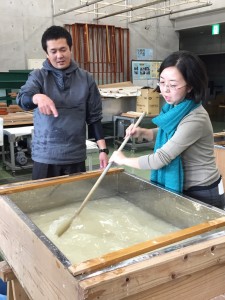
With the intent of maintaining sekishu washi skills and techniques, the artisans have devoted themselves in not only passing the practices down to the next generation, but also in inventing new washi products to fit into the lifestyles of modern daily life.
They have also been active in international cooperation such as receiving trainees from Bhutan over the past 20 years. I am amazed by their tireless activity in keeping the traditions, looking for new opportunities, and delivering their techniques to the world.



